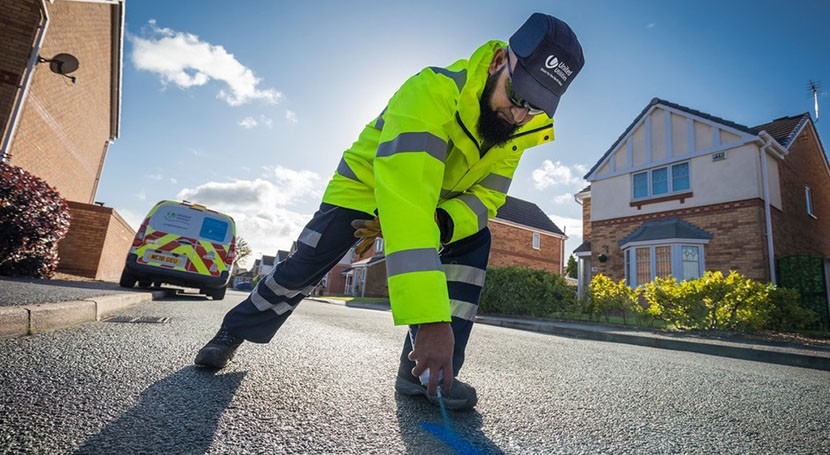Advanced Water Leak Detection Solutions for Your Home and Business
Advanced Water Leak Detection Solutions for Your Home and Business
Blog Article
Cutting-edge Solutions for Early Detection of Water Leaks in Structures and Framework
From innovative leakage discovery technologies to the release of IoT sensing units for real-time tracking, the landscape of leak prevention is advancing rapidly. Automated water circulation analysis systems are reshaping how leaks are determined and dealt with, paving the means for a positive strategy to water leak discovery.
Advanced Leakage Discovery Technologies
Advanced leak detection technologies, geared up with advanced sensors and algorithms, play a vital function in swiftly determining and identifying water leakages in various settings. These innovations use a combination of acoustic, thermal, and electromagnetic noticing approaches to identify leakages precisely. Acoustic sensors detect the sound of leaving water, enabling accurate localization of the leak resource. Thermal imaging finds temperature adjustments brought on by water leakage, providing one more effective technique for leakage recognition. Electromagnetic sensors can recognize changes in electromagnetic areas triggered by water, using yet another layer of leak detection capacity.

IoT Sensors for Real-Time Monitoring
In the world of contemporary water leak detection, the combination of IoT sensing units for real-time surveillance stands for an essential development in boosting proactive leakage detection abilities. These sensors provide continuous surveillance of water systems, supplying real-time data on water circulation rates, stress variants, and temperature level adjustments. By leveraging IoT modern technology, these sensing units can identify even the tiniest anomalies in water usage patterns, making it possible for early recognition of potential leakages before they intensify into major concerns.
IoT sensors transfer data to a centralized system, where advanced algorithms assess the info and create notifies or notices when abnormalities are found. This real-time surveillance ability permits homeowner or facility managers to quickly deal with leakages, decreasing water damages, lowering fixing expenses, and conserving water resources.
In addition, IoT sensors can be integrated with building monitoring systems, permitting for automatic feedbacks to detected leaks, such as shutting down water valves or activating pumps to alleviate the effect of leaks. Overall, the execution of IoT sensors for real-time monitoring substantially enhances the effectiveness and efficiency of water leakage detection in structures and infrastructure.
Artificial Intelligence Algorithms for Leak Prediction

One secret advantage of utilizing equipment discovering for leakage prediction is its ability to continually learn and improve its precision in time. go to this site As more data is accumulated and fed right into the formula, it can refine its predictions and adapt to transforming problems, inevitably boosting the reliability of leakage detection systems.
In addition, artificial intelligence formulas can help in look these up recognizing subtle indications of leaks that might go undetected by standard surveillance approaches. water leak detection. By analyzing intricate information collections in real-time, these formulas can supply very early warnings and notifies, allowing for prompt treatment and precautionary upkeep to mitigate possible water damages and connected expenses
Utilizing Thermal Imaging for Leakage Detection
Thermal imaging innovation provides an appealing technique for spotting water leakages in various systems and facilities. By utilizing infrared radiation and temperature level differences, thermal imaging cams can identify hidden leaks that are not conveniently visible to the naked eye.
Among the key benefits of thermal imaging for leak detection is its non-intrusive nature. Unlike conventional methods that may need getting into wall surfaces or floorings to situate leaks, thermal imaging permits for non-destructive screening. This not just saves time and decreases expenses however likewise decreases disturbance to the structure or facilities being examined. In addition, thermal imaging can promptly scan large areas, supplying a detailed summary of prospective leak Homepage resources in a prompt way. Overall, the use of thermal imaging technology enhances the efficiency and precision of water leakage discovery, making it a beneficial device for preserving the integrity of structures and facilities.
Automated Water Circulation Evaluation Systems
Just how can automatic water circulation analysis systems change the detection and monitoring of leaks in various systems and facilities? Automated water flow evaluation systems offer an aggressive strategy to leak discovery by continuously keeping an eye on water flow prices and patterns. By establishing standard data, these systems can rapidly recognize deviations that might indicate a leak, allowing punctual treatment to protect against considerable damage.
These systems use innovative algorithms to examine real-time data and offer prompt signals when anomalies are identified, permitting swift action to be taken. Furthermore, computerized water flow analysis systems can be incorporated with structure management systems or IoT platforms, boosting total efficiency and allowing remote surveillance capabilities.
Moreover, the data gathered by these systems can be utilized for predictive maintenance functions, assisting to determine prospective powerlessness in the facilities prior to leakages take place. Generally, the execution of automatic water flow analysis systems can considerably improve leak detection and monitoring practices, inevitably bring about cost financial savings, reduced water wastefulness, and enhanced sustainability in structures and facilities.

Conclusion
To conclude, the integration of sophisticated leakage detection innovations, IoT sensing units, maker learning algorithms, thermal imaging, and automated water flow analysis systems offers innovative solutions for early detection of water leakages in structures and infrastructure. These technologies enable real-time monitoring, prediction of leaks, and efficient detection approaches to avoid water damage and wastefulness. Carrying out these options can assist in preserving the stability and sustainability of water systems in various settings.
Report this page